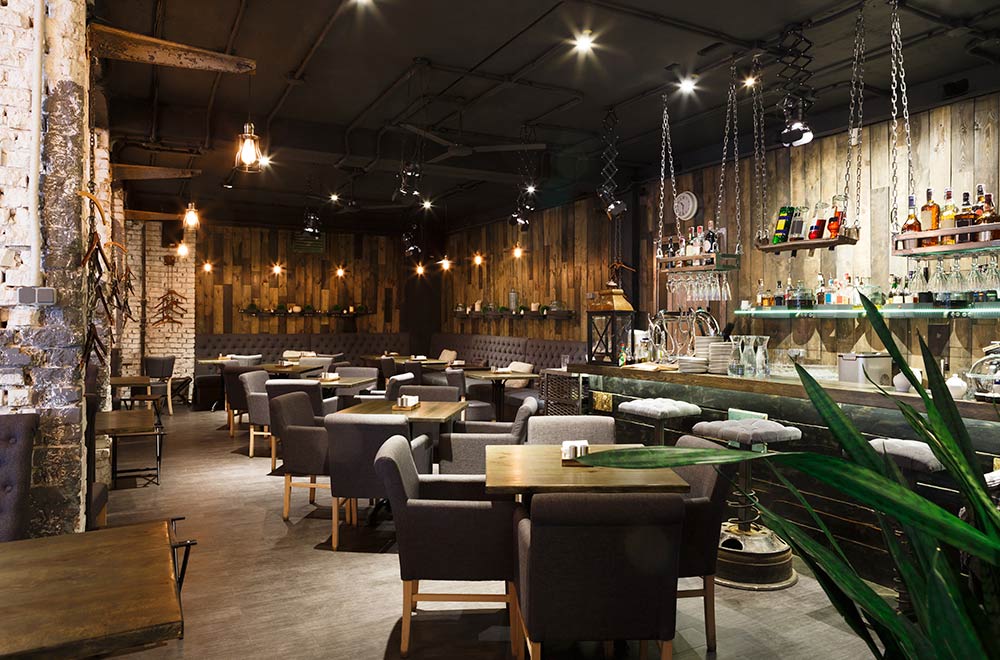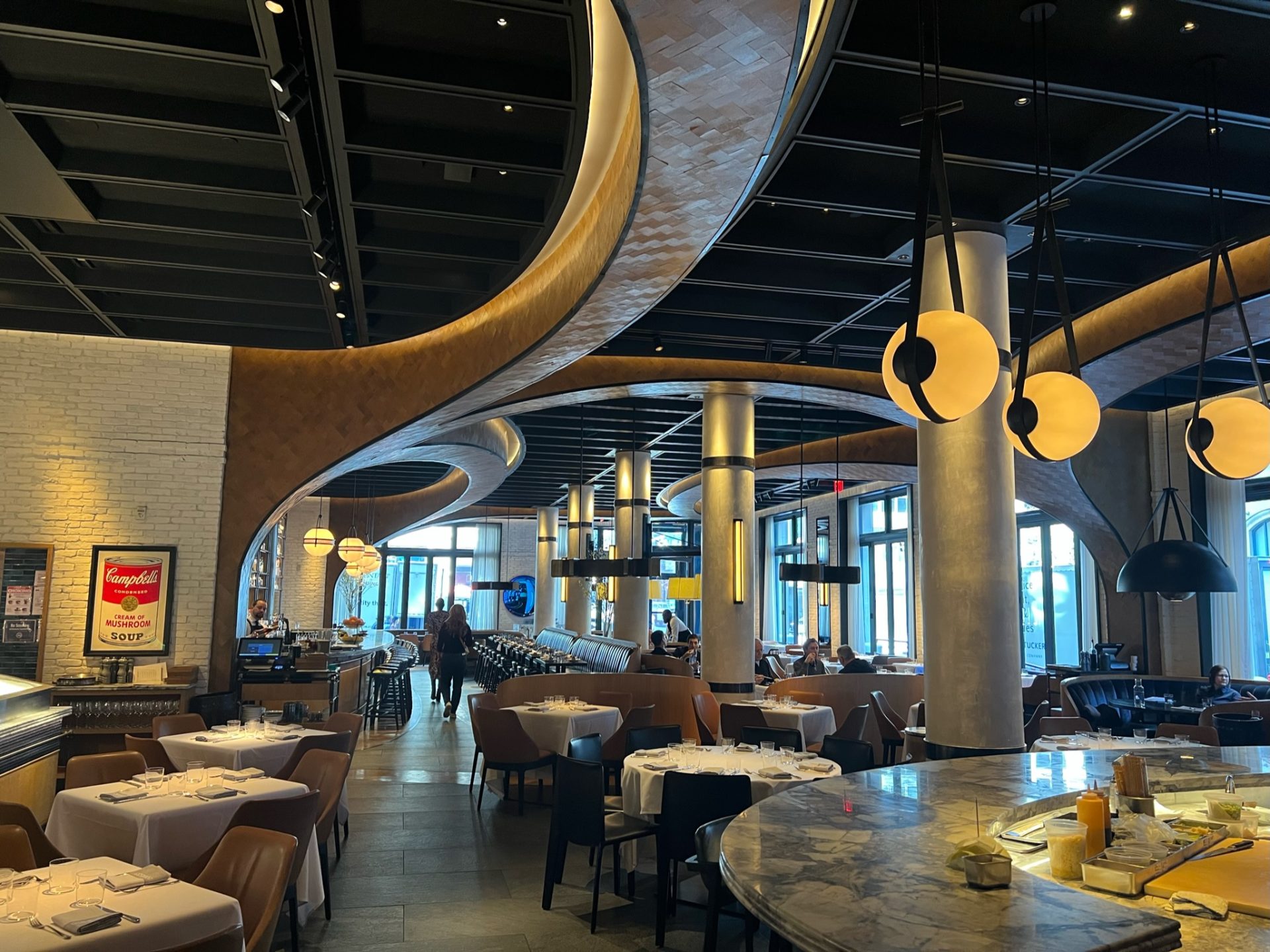Best Asian Restaurant Islamabad: Experience Tastes from Across Asia
Best Asian Restaurant Islamabad: Experience Tastes from Across Asia
Blog Article
Savor Genuine Oriental Food With a Pan-Asian Spin for a Cooking Journey
Starting a culinary trip through authentic Eastern food, enhanced with a Pan-Asian spin, provides a distinct opportunity to explore the rich tapestry of flavors that define the area's varied cooking customs. This experience welcomes you to savor the elegant balance of preferences-- sweet, salted, spicy, and sour-- integrated by aromatic herbs and seasonings. Visualize the innovative blend of Thai curry and ramen or the unexpected pleasure of sushi burritos. As you ponder these tempting recipes, consider the social narratives and historical impacts that form them, each bite supplying a story waiting to be uncovered.

Discovering Pan-Asian Flavors
In the world of global gastronomy, Pan-Asian food stands apart for its amazing diversity and the unified interaction of flavors from numerous Eastern cultures. This cooking approach celebrates the rich customs and special ingredients found throughout the continent, developing a tapestry of preferences that is both enjoyable and interesting. Secret to Pan-Asian cuisine is its capability to stabilize contrasting tastes-- sweet, salty, spicy, and sour-- while highlighting the freshness and high quality of each active ingredient.
From the umami-rich soy sauce of Japan to the fiery chili peppers of Thailand, Pan-Asian cuisine offers a substantial palette of flavors. These components are usually incorporated in innovative means, enhancing recipes with layers of complexity. As an example, making use of aromatic natural herbs such as lemongrass and cilantro, typical in Vietnamese and Thai food, includes a revitalizing illumination to meals, while the incorporation of coconut milk supplies a creamy, abundant texture.
The emphasis on fresh fruit and vegetables and fragrant spices guarantees that each meal is not only a feast for the taste but also for the detects. Pan-Asian cuisine invites restaurants to begin on a cooking trip, checking out the substantial and varied landscapes of Eastern gastronomy with every bite.
Fusion Meals to Attempt
While Pan-Asian food is commemorated for its typical flavors, the modern cooking landscape is significantly accepting blend dishes that blend these timeless components with influences from other regions. This ingenious method not only honors the rich heritage of Eastern culinary arts however also introduces novel taste experiences that attract modern tastes buds.
An archetype of such a combination meal is the Korean-Mexican taco, where marinated bulgogi beef is wrapped in a cozy tortilla, covered with kimchi and a zesty gochujang-infused salsa. This mix weds the strong, tasty flavors of Korea with the vibrant, fresh elements of Mexican food. Likewise, sushi burritos have gotten appeal, joining together the fragile artistry of Japanese sushi with the hearty, hand-held convenience of a burrito, frequently featuring blend components like tempura shrimp and avocado with a drizzle of wasabi mayo.
Another notable dish is Thai curry ramen, which instills the creamy, aromatic spices of Thai curry into the calming broth of typical Japanese ramen, creating a harmonious mix that tantalizes the senses. These combination recipes extend past plain uniqueness; they represent a culinary discussion between societies, motivating exploration and innovation in the globe of Pan-Asian food.
Important Active Ingredients and Seasonings
To absolutely value Pan-Asian food, one have to recognize the necessary active ingredients and spices that develop its structure. This varied cooking design attracts from a rich tapestry of Eastern customs, employing an unified mix of tastes and structures.
Fragrant elements are crucial, with ginger, lemongrass, and garlic being ubiquitous across numerous Pan-Asian dishes. These active ingredients offer a fragrant base that enhances the complexity of flavors. Seasonings such as celebrity anise, cardamom, and cinnamon present heat and character, resembling impacts from regions like China and India.

Food Preparation Methods and Tips
Mastering the art of Pan-Asian food calls for knowledge with its distinct food preparation techniques, each adding to the vivid tapestry of flavors this cooking practice is celebrated for. Central to these approaches is the stir-fry, a rapid cooking strategy that preserves the nutritional honesty and vibrant colors of active ingredients. Making use of a wok, the stir-fry method permits even heat circulation, crucial for accomplishing the characteristic texture and flavor equilibrium of Pan-Asian dishes.
One more essential strategy is steaming, specifically widespread in Chinese food. This gentle technique maintains the natural flavors and nutrients of active ingredients, making it suitable for fish and shellfish and vegetables. Dumplings, a precious staple, often take advantage of steaming, leading to soft, succulent appearances.
Grilling, also integral, gives smoky midsts to meals such as Korean bulgogi or Japanese yakitori (asian restaurant isb). This strategy often involves marinating ingredients, allowing tastes to pass through deeply prior to cooking over an open fire or hot plate
Finally, understanding the art of balancing tastes-- wonderful, sour, salted, bitter, and umami-- is essential. Appropriately layering these components can boost a recipe from normal to remarkable, supplying a complex and satisfying culinary experience that embodies the significance of Pan-Asian cuisine.
Eating Experiences Worldwide
Throughout the world, Pan-Asian cuisine uses an exceptional dining experience, commemorated for its rich tapestry of tastes and dynamic presentations. This cooking sensation has gone beyond cultural boundaries, recording the hearts and palates of food fanatics worldwide. In cosmopolitan cities fresh York, London, and Sydney, Pan-Asian dining establishments offer as fusions where cooking customs from Thailand, Japan, China, and beyond assemble, offering diners with a diverse mix of dishes that highlight the area's variety.
The international allure of Pan-Asian food lies in its ability to offer both authenticity and advancement. Cooks skillfully wed typical ingredients such as lemongrass, soy sauce, and miso with contemporary methods, leading to meals that are both familiar and refreshingly new. This combination enables restaurants to start a culinary trip that respects heritage while accepting modernity.
In addition, eating experiences are raised with thoughtfully created settings that show the principles of Pan-Asian aesthetic appeals. From minimal Japanese-inspired interiors to lively Thai-themed spaces, each dining establishment uses an one-of-a-kind setting that enhances the culinary offerings. Therefore, clients are not simply taking in a dish yet partaking in a cultural experience, making Pan-Asian eating a really worldwide phenomenon.
Conclusion
The exploration of Pan-Asian cuisine uses an extensive understanding of the elaborate interaction of flavors pan asian dining Islamabad and cooking traditions throughout Asia. By welcoming blend dishes such as Thai curry ramen and sushi burritos, the cooking trip not just highlights the versatility of conventional active ingredients however also showcases cutting-edge modern-day techniques. This gastronomic journey, improved by cooking approaches and necessary seasonings, supplies a distinct possibility to value the cultural diversity and cooking creativity that define Pan-Asian food on an international scale.
Getting started on a cooking trip with genuine Eastern cuisine, enhanced with a Pan-Asian spin, uses an one-of-a-kind chance to explore the rich tapestry of tastes that define the region's varied culinary customs.In the realm of international gastronomy, Pan-Asian food stands out for its exceptional diversity and the unified interaction of flavors from different Eastern cultures. Secret to Pan-Asian cuisine is its capability to balance contrasting tastes-- wonderful, salty, spicy, and sour-- while highlighting the quality and top quality of each active ingredient.

Report this page